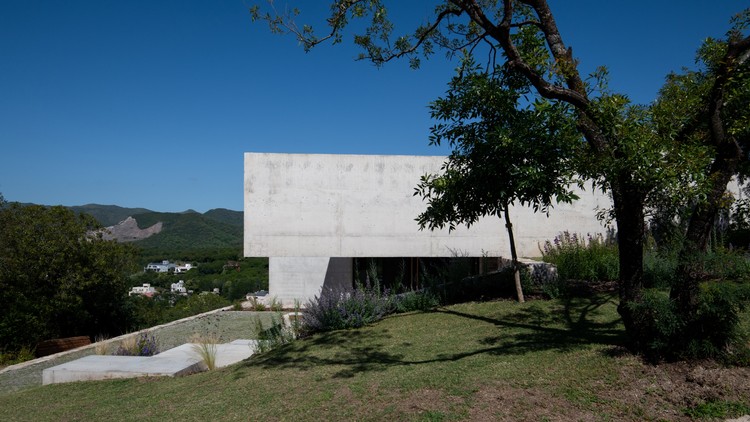Transmission
2017-10-17 22:00
老房子的再生-在北京的岁月里酝酿着,老酒厂的芬芳依然沉醉在路边,在一大块金属格栅墙外,酒盒整齐错位,点缀在其中,阳光穿透了后方一座老旧的厂房,显示出高度质感的深度。这座名为“国际酿酒师艺术博物馆”的项目位于北京市中心,是俄罗斯古典结构工业建筑的废墟。它是中国老品牌“龙印红酒”的缩影,经历了时代的沧桑,最终因过时而退役。后来,一群人发现了这个斑驳的容器,用古老酒庄密集的空间感重新定位了精神,用现代设计技术重塑了它,试图创造更多的葡萄酒与人,人与人的互动空间。现在,它将重新注入精神,扩展中国的葡萄酒文化。
Regeneration of old housed- brewing in Beijing years, continuing intoxicating fragrance of the old winery Secluded side of the road, outside of a large panel of metal grille wall, wine boxes orderly misplaced and interspersed among them, sun light penetrates to an aged factory building in rear, showing the depth of the elevation texture. This project, the Museum Of International Brewmasters Art, locates in the center of Beijing, a ruin of classical Russian structural industrial building. It is an epitome of a Chinese old brand, Dragon Seal Red Wine, experienced the vicissitudes of times and finally retired cause by out of date. Afterward, a group of people found this mottled container, repositioned the spirit with the dense sense of spatial presence of the old winery, reshaped by contemporary design techniques, trying to create more interacting spaces of wine and people, or people and people. Now, it will reload the spirit and extend the Chinese wine culture.
© Zhuang Boqin
庄伯勤


Floor Plan


© Zhuang Boqin
庄伯勤


场串联酿酒为概念,以破碎的固体空间为中介,创造酒是我们祖先智慧的成果,结合土壤、水、火、粮等元素,花最重要的时间酿造一款令人兴奋的葡萄酒。我们将这一完全自然的酿造过程与空间模式相匹配,形成了“土壤、水、火、粮”四个领域,每个空间因功能不同而产生不同的精神意义。因此,空间规划和循环规划以土壤、水、火、粮食酿造过程为概念展开,在丰富多样的领域中包含动态定时。开着门躲着高架,首先进入“土壤”作为主题的空间。土壤是万物之母,也是古窖泥,每克古窖泥都含有数以百万计的微生物参与酿酒。两堵土铲墙站在中间,创建一个展览馆,在时间表内夯实土墙内的拉长空间,作为大师葡萄酒工作室的教学、培训、展示使用。在此之后,“水”的表现就是试图打破传统的一成不变的葡萄酒展示,通过切割和翻新旧渠道,利用水、光、影来催化局势,将“酒的血”轴延伸到酒吧区域,象征着“火”,从而形成一种流动的安静的水特性。
Field tandem- wine-making as the concept, connecting shattered solid space as intermediary The creation of wine is the fruit of the wisdom of our ancestors, combined with soil, water, fire, grain and other elements, spending the most important time in order to brew an exciting wine. We make this totally natural brewing process to match spatial patterns, formed "soil, water, fire, grain" four fields, each space due to the different function resulting in different spiritual meanings. Therefore, the planning of space and circulation uses soil, water, fire, grain brewing process as conceptual developing, containing dynamic timing in the rich and diverse field. Opening the door hiding from the elevation of grills, first enters the "soil" as the theme of space. The soil is the mother of all things, also ancient pit mud, each gram of ancient pit mud contains hundreds of hundreds of millions of microbes involved in wine brewing. Two earth trowel walls standing in between, create a display gallery in a timetable, rammed earth wall inside the elongated space as a master wine studio for teaching, training, display use. After that, the performance of "Water" is in an attempt to break the traditional Immutable wine display, forming a flowing quiet water feature by cutting and refurbishing the old channel, using of water, light and shadow to catalyze situations, extending "the blood of wine" the axis to the bar area, symbolic of "fire".
© Zhuang Boqin
庄伯勤


复兴-保持老建筑的质感,赋予当代思维的空间精神,以“火”为设计理念,保留原地区的大型储罐,诗歌和机翼文化的独特发祥地,在这个水火交融的地区,人们可以单独饮用,或者喝得很好,充分展现了中国人钟爱酒的真实气质,政治家的诡计,小人物的生活,人们因敬酒和大笑而引起的怀旧情结,数百种人性都隐藏在玻璃里。因此,我们巧妙地改造成分隔的箱子,巧妙地嵌入立交桥,以激活二楼座位、茶室和酒窖。
Rejuvenation-keeping the old building texture, giving the spatial spirit of contemporary thinking One side of the bar area, "fire" as design concept, keeps the original large storage tank in the area, the unique birthplace of poetry and wing culture, in this blending area symbiotic of water and fire, people can drink alone elegantly, or drink well, fully showing the true Chinese temperament of loving wine, politician's trickery, small people's life, nostalgia situation of common people arouse by toasting and laughing, hundreds kinds of humanity all hidden in glass. Therefore, we ingeniously transform to separated boxes and cleverly imbed flyovers to activate the second floor seating, tea room and wine cellar
© Zhuang Boqin
庄伯勤


博物馆的最后一处,“谷类”作为歌曲结尾的高潮,一粒换一片土地,一股风换一片土地,高粱酒和红酒,是每个地方最浓烈的口味。酿酒厂生产的葡萄酒可以运到其他地方,但老酒厂的记忆只能在这里单独保存。我们捕捉到了画廊现有秩序和特殊旧硬件遗留下来的“纹样”形象,在这一整理的空白中,新旧对比强烈,试图碰撞艺术画廊的当代本质,而不是用完全“旧”来表达废墟的美,而是以一种模糊的方式创造另一种“新”。
The last of the museum, "grain" as the culmination of the end of song, one grain for one land, thus one wind for one land, sorghum wine and red wine, is the most concentrated taste of each local favor. The wine produced by the winery may be shipped to other places, however, the memory of the old winery can only stand here alone. We capture the image of "grain" for the art gallery where existing order in place and special old hardware left behind, strong contrast between old and new in this sorted out white space, tries to collide the contemporary nature of the art gallery, not expressing the beauty of the ruin by completely “old” but in an ambiguous way of creating another "new".
© Zhuang Boqin
庄伯勤


在白色调的空间中,老酒厂所需的圆形开口变成了展览和观众的互动对话成员,为空间增添了不言而喻的本质。二楼设开放式宴会厅,以“看戏”为理念,通过悬挂大型传统戏剧绘画,创造新旧融合,具有现代空间,但具有深厚的文化遗产。万物都有它的终结,生命和自然的成长,从酒的生命周期,观众体验到建筑的过去和给定的新词,酿造葡萄酒就像建筑一样,如同时代的凝结。
In the white tone of space, the round openings required for the old winery are converted into the interacting and making dialogue members for the exhibition and viewers, adding the self-evident nature to the space. Open banquet places set up in the second floor, “watching the play” as the concept, create a fusion of new and old by hanging large traditional drama painting, a modern space but with deep cultural heritages. Everything has its end, life and growth in nature, from the life cycle of wine, viewers experience the past of architecture and the new phrase of given, brewing wine just as architecture, as the condensation of times.
© Zhuang Boqin
庄伯勤






















































